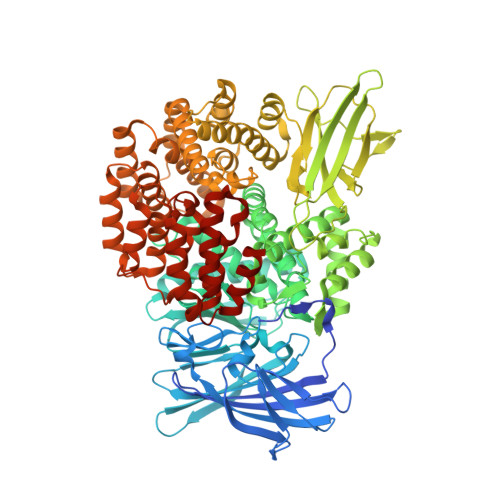Structure of aminopeptidase N from Escherichia coli suggests a compartmentalized, gated active site.
Addlagatta, A., Gay, L., Matthews, B.W.(2006) Proc Natl Acad Sci U S A 103: 13339-13344
- PubMed: 16938892
- DOI: https://doi.org/10.1073/pnas.0606167103
- Primary Citation of Related Structures:
2HPO, 2HPT - PubMed Abstract:
Aminopeptidase N from Escherichia coli is a major metalloprotease that participates in the controlled hydrolysis of peptides in the proteolytic pathway. Determination of the 870-aa structure reveals that it has four domains similar to the tricorn-interacting factor F3. The thermolysin-like active site is enclosed within a large cavity with a volume of 2,200 A(3), which is inaccessible to substrates except for a small opening of approximately 8-10 A. The substrate-based inhibitor bestatin binds to the protein with minimal changes, suggesting that this is the active form of the enzyme. The previously described structure of F3 had three distinct conformations that were described as "closed," "intermediate," and "open." The structure of aminopeptidase N from E. coli, however, is substantially more closed than any of these. Taken together, the results suggest that these proteases, which are involved in intracellular peptide degradation, prevent inadvertent hydrolysis of inappropriate substrates by enclosing the active site within a large cavity. There is also some evidence that the open form of the enzyme, which admits substrates, remains inactive until it adopts the closed form.
- Howard Hughes Medical Institute and Institute of Molecular Biology and Department of Physics, University of Oregon, Eugene, OR 97403-1229.
Organizational Affiliation:


















